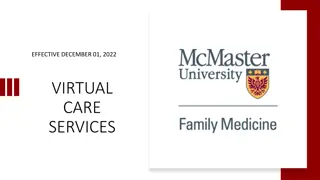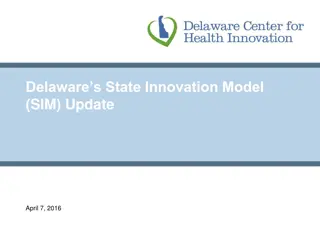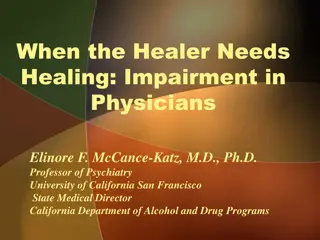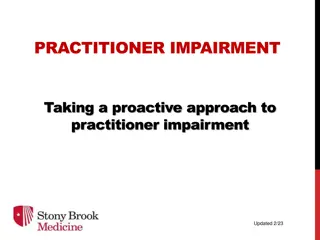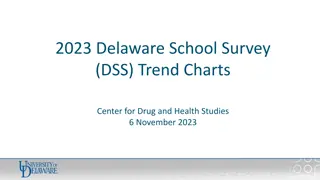Primary Care Physician in Delaware 2021 Summary
Improvement in physician demographics in Kent and Sussex County is observed, with a projected increase in active practitioners. The study shows a majority of providers offering direct primary care services, with a significant impact of COVID-19 on practices. Methodology details the response rate and demographics of participating physicians. Geographic distribution reveals a concentration of primary care providers in the Mid-Atlantic region. Specialties include Family Practice, Internal Medicine, and OB/Gyn or Pediatrics, with concerns in service availability for new patients. Value-based reimbursement models and challenges faced due to COVID-19, such as telemedicine use and practice disruptions, are highlighted.
Download Presentation

Please find below an Image/Link to download the presentation.
The content on the website is provided AS IS for your information and personal use only. It may not be sold, licensed, or shared on other websites without obtaining consent from the author.If you encounter any issues during the download, it is possible that the publisher has removed the file from their server.
You are allowed to download the files provided on this website for personal or commercial use, subject to the condition that they are used lawfully. All files are the property of their respective owners.
The content on the website is provided AS IS for your information and personal use only. It may not be sold, licensed, or shared on other websites without obtaining consent from the author.
E N D
Presentation Transcript
Primary Care Physician in Delaware 2021 9thedition DR. TIBOR TOTH, UNIV OF DE BIDEN SCHOOL OF PUBLIC POLICY AND ADMINISTRATION
Executive Summary DEMOGRAPHICS: Improvement in Kent and Sussex County for # of physicians to patients Kent approx. 58% will be active in practice 5 yrs from now; Sussex 69% and NCC 71%>>>? Age demographics Direct primary care - total DE FTE 660 HRSA definition is 2000:1 62% practices employ non-physician services Approximately 75% started TH services Impact of COVID
METHODOLOGY 799 of 2687 eligible physicians responded Demographics: gender, race/county (Fig 2.4) 67% Cauc; 20.5% Asian (disproportionally higher in Sussex: 7.8% African American and 5.5% Hispanic Same PCP specialties as SB227 Of 865 who met this criteria, 660 were FTE>>Fig 2.1 demonstrates 612/865 or 462 of 660 are in NCC
Geography 63.2 % of all DE PCPs resided in Mid-Atlantic area at time of HS graduation 53.6% went to medical school within several hundred miles 77% completed residency in the Mid-Atlantic region
Specialties and Practice Fig 3.2: 35% FP; 33% IM; 33% OB/Gyn or Peds Non-physician providers fig 3.10, 3.11 73.3% in Sussex; 59% in NCC Acceptance of New patients, Medicare and Medicaid Statistically good but some concern regarding Kent Cty providing services to new M/M patients Is this due to the amount of time/support needed to provide care to these patient populations and therefore, decreases availability of services to new patients Comparison of wait time for appointment by new vs. established patients (Pg24)
Additional Data Value Based reimbursement models: fig 3.13 PFP (60%), Shared savings (33.2), Shared risk (17.6%), capitation (13.6%); and concierge (7.8%) Changes in practices due to COVID: Use of telemedicine 10 % of Sussex practices decided not to use at all; overall 71-79% Practice challenges: sick staff; loss of income upwards 46%; shortage of supplies or space to care for sick patients Use of long acting contraception management also asked in 2018 As well as planned pregnancy
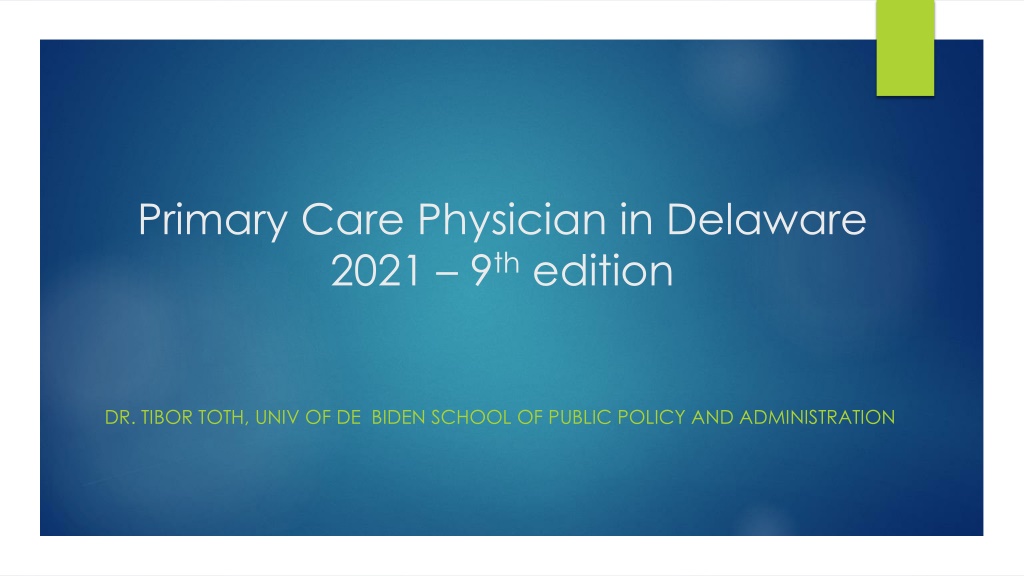
 undefined
undefined

















